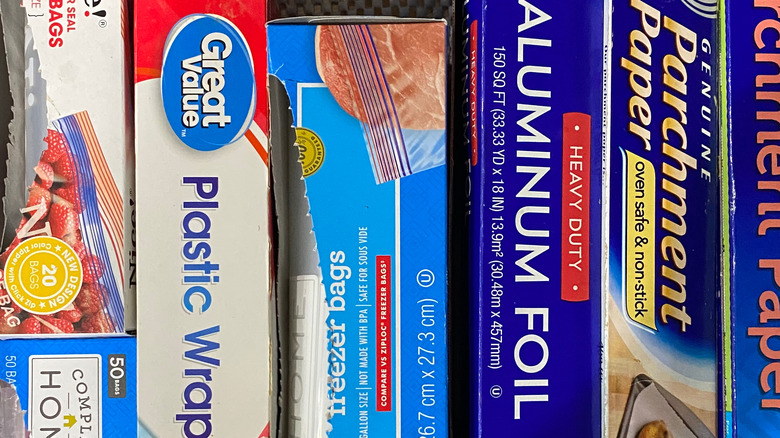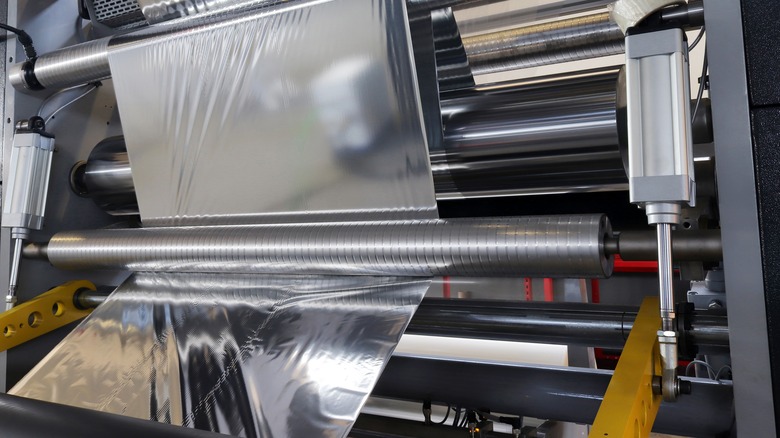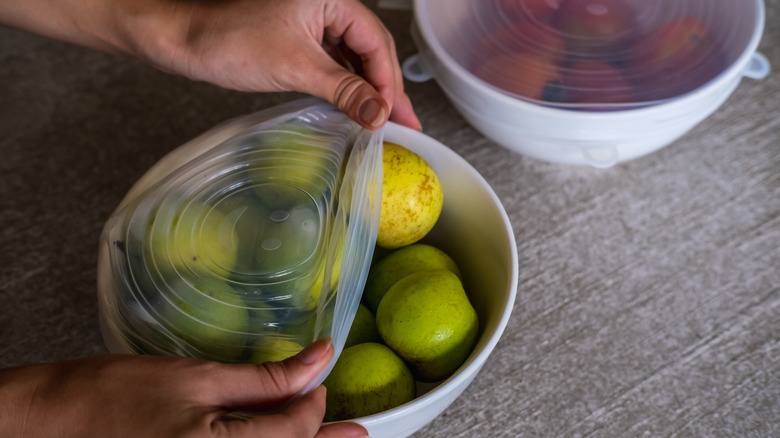Is Aluminum Foil Or Plastic Wrap Better For The Environment?
Aluminum foil tricks for creative home DIYs seem endless — from covering up a tray of wet paint, to using Citristrip, to even creating fun crafts and home décor. Of course, aluminum foil is also the obvious choice for some tasks because it won't melt, but plastic wrap has its own advantages, like a slight stretch and more airtight seal.
If you're given a choice between the two, you might wrestle with yourself about whether to reach for the plastic wrap or the aluminum foil, especially if you're concerned about the environment. Aluminum foil can take between 80 and 400 years to decompose, while plastic wrap can take between 20 and 500 years to break down, but doesn't ever decompose all the way. However, aluminum foil is actually much more environmentally expensive and harmful to produce, which means that plastic wrap is usually the better option.
We tend to see all forms of plastic as detrimental to the environment, so it may come as a surprise to learn that choosing plastic wrap in some cases can be better, even though it's not perfect. When it comes to the overall environmental impact of human-made goods, there are more factors to consider than just the lifespan of the product itself. Here's why aluminum foil isn't as earth-conscious as you might have believed, how it measures up to plastic wrap, and other ideas for reducing your single-use material waste.
Aluminum foil is much worse overall
Overall, the cons outweigh the pros when it comes to aluminum foil usage. Making aluminum foil uses more energy per square foot than plastic wrap, and produces more harmful byproducts. The problems with aluminum foil start from the ground up; to make the foil wrap, bauxite must be mined from the surface of the earth, which destroys many forests and ecosystems in the process.
Smelting bauxite into alumina requires a tremendous amount of energy and water, and creates many harmful byproducts, including air and water pollutants and a hazardous sludge known as red mud. This red mud contains heavy metals and even radioactive elements, which have the potential to cause severe health issues for people and the planet.
While you might feel bad reaching for plastic cling film in your kitchen, it's actually the lesser of two evils. Firstly, the raw ingredients for making plastic are not razed from the earth's surface, killing trees in their path, but derived from materials like cellulose, coal, and crude oil. Manufacturing plastic wrap requires less than a third of the amount of energy it takes to produce aluminum foil. While plastic manufacturing contributes a significant amount of greenhouse gases, it releases just 10% of the emissions as foil, according to HuffPost.
Reducing your usage is the best solution
Of course, the answers to life's dilemmas aren't always so black and white. If you need to use aluminum foil, there are ways to be more earth-conscious about it. One benefit of aluminum is that it tends to tangle up less than plastic wrap, so you may be able to use it for slightly longer and reshape it as needed. According to the Environmental Protection Agency, aluminum foil can be recycled, so long as any food or other residue is removed. This recycling process will also require energy, but it's generally less than producing new foil.
If you can't or don't wish to recycle your aluminum, you can still try to reuse it when possible and explore all the ways you can repurpose aluminum foil around the house. On the other hand, plastic wraps, films, and baggies can't generally be recycled from home, and can be much more impractical, if not impossible, to reuse.
In the debate between aluminum foil vs. plastic wrap, neither option is a great solution, but sometimes using these materials for certain home hacks and DIY projects is unavoidable. If you can use them sparingly, you'll minimize their environmental impact. You don't have to go entirely without either; there are plenty of other more environmentally friendly alternatives on the market, so reach for parchment paper, reusable beeswax wraps, reusable silicone stretch lids, or washable glass containers whenever possible.


